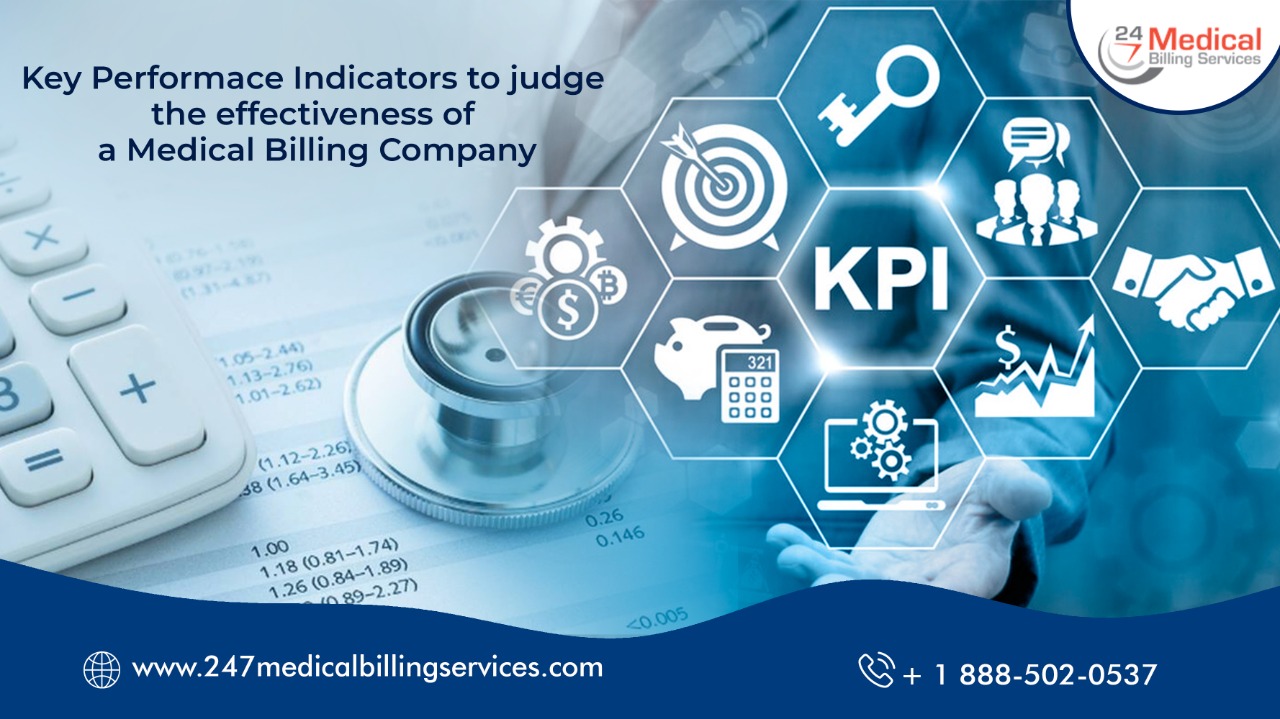
Key Performance Indicators to judge the effectiveness of a Medical Billing Company
The intricacies of medical billing appear to have no end in today's complex and difficult reimbursement situations. Regardless of the challenges, you must be ready to guarantee that collections are optimized and streamlined. As a result, keeping track of your practice's financial performance while providing excellent patient care is critical to the success of your medical billing practice.
How do you know if your business and the people you choose to execute your medical billing practice is running at full speed? Creating a dashboard of key performance indicators might help you stay focused on your goals. Medical billing metrics, also known as Key Performance Indicators (KPIs), assist practitioners in gaining a better understanding of their revenue cycle and providing insight into how to boost collections.
This is why so many practices will concentrate on medical billing key performance indicators.
1. Identify bad debts
One of the most important medical billing KPIs to keep an eye on is the bad debt rate. Not all of your patients will be able to pay their bills on time, and you should have anticipated this when reviewing all of your revenue. However, one of the most important medical billing KPIs is to monitor the bad debt rate which is stated as a percentage. Divide authorized charges by bad debt write-offs to get this percentage.
2. Make use of your KPI data
It's important to stay within industry norms on key metrics, but it's easy to get distracted by the plethora of external obstacles that affect your performance. As a result, be aware of the upper bounds. While underperformance on some or all of these indicators may be unavoidable in your situation, it is beneficial to draw a line that will prompt you to search deeper for possibilities to enhance performance.
3. Track Gross Collection Rate
Another important KPI is the gross collection rate which is calculated by dividing money from payments by invoiced charges. It's a good metric to utilize when comparing the cash flow of your company and also to obtain a better picture of what future collections will be like by examining the fluctuations. The gross collection rate will always be affected in case there are any alterations made to the patient population, fees, and insurance providers.
4. Check Accounts Receivable (A/R) Days
The accounts receivable (A/R) of practice reflects how many payments have yet to be received, whether for insurance reimbursements or out-of-pocket expenses. The goal here is to study and improve to streamline your operations in order to get your practice reimbursed faster. This may entail reducing billing and coding errors or improving claim follow-up. Keeping track of how long claims spend in A/R can help clinics figure out which payers are delayed and why.
5. Calculate Net Collection Rate
You'll need to calculate the net collection rate to see how much money your practice is making out of all the bills that are available for payment. It's calculated by dividing payments by the total number of allowable charges. You can compare different groups in your company using the net collection rate, and see how demographic changes affect the percentages your teams collect.
6. Identify Resolve/ Denial Rate
The effectiveness of your practice's resolution rate will reveal how disciplined your personnel is in managing revenue flow. This is calculated by dividing the total number of claims paid in a particular time by the total number of claims filed in the same period. On the other hand, the denial rate is calculated by dividing the number of claims refused by the number of claims remitted.
7. Curate the Unbilled Claims
Calculate the number of claims divided by the number of claims that were rejected due to incorrect or missing information to get a handle on this critical performance metric. Details like inaccurate doctor's orders, omitting or using wrong DX codes and errors in patient demographic information can all contribute to a higher unbilled claims KPI.
When it comes to medical billing services, practices will need to pay particular attention to the finer points to ensure employee efficiency and effectiveness. Therefore, keeping track of medical billing KPIs will help such medical billing practices be top of important metrics and improve the revenue cycle.
Unsure of how to manage such KPIs or how to go about it? You can simply reach out to 24/7 Medical Billing Services and we will take it from there. We put a lot of consideration into the best ways to discover and analyze your KPIs over time as a medical billing provider with our diverse industry expertise; helping you maximize your practice’s income potential. We will also help you examine such KPIs for daily activities as well as weekly performance, monthly trends, and quarterly updates to help you ensure you maintain a well-orchestrated medical billing practice.
Read More: Reports You Should Ask For With Your Medical Billing Team

.png)